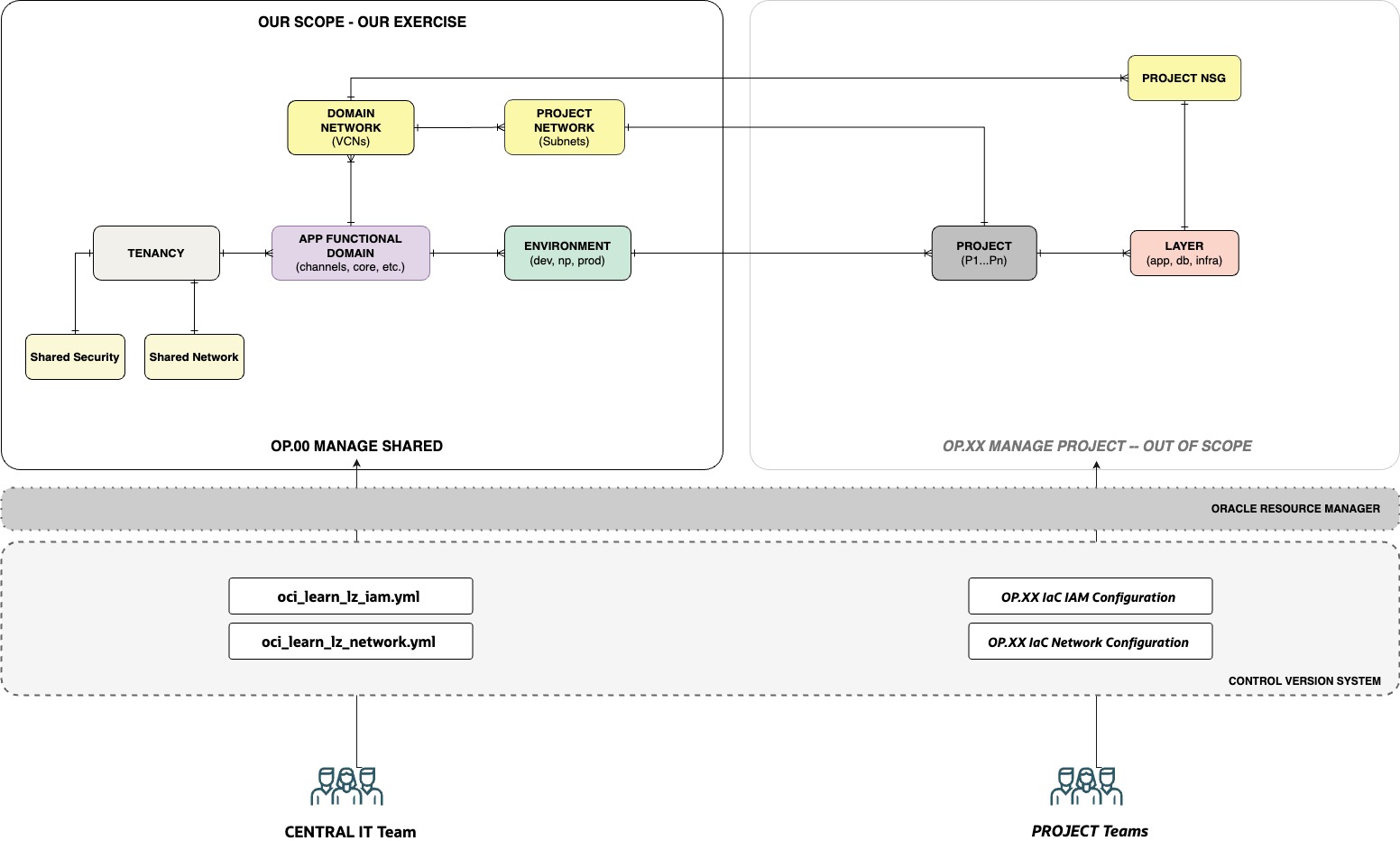1. Objective
2. Before you Start
3. Functional Content
4. Exercises
Welcome to the Open Learn LZ, a set of exercises to learn how to design and configure landing zones. Its main objectives are:
- Provide elementary landing zone design capabilities with draw.io.
- Create skills in IaC configurations, by configuring the OCI Learn LZ resources. You do not code OCI landing zones anymore, you configure them.
- Demonstrate a cloud-native operating model with versioned configurations and an automation engine - based in ORM.
Anyone can run the OCI-Learn-LZ exercises. If you don't have an OCI Paid Account, to execute the exercises you will need and OCI Free Tier account.
Note that an OCI Free Tier account after a predefined time or initial credits consumed, is automatically limited to use Always Free resources - if not upgraded. If this is your case, you need to free all VCNs resources as exercise 2 will use two VCNs which is the limit of the always-free model.
We highly recommend using an IDE for the exercises (e.g., Visual Studio Code), as it helps with the formatting of configuration files. The same IDE can be integrated with GIT, having the development tools all in the same place.
Before you start it's essential to clone this Git repository. You can clone it through the IDE or Git command line. You will need this to have your local working copy.
This repository will be referenced in the exercises as OCI-LEARN-LZ-OPS-REPO. Whenever you need to test changes you will push your local configuration files into your remote user folder, on the OCI-LEARN-LZ-OPS-REPO main branch. You will need public raw links to these files in ORM, for each exercise.
The OCI Learn LZ has the following characteristics:
- Resource Organization: OCI Landing Zone resources are organized by Application Functional Domains, Environments, Projects, and Project Layers. This model is suitable to aggregate workloads by domain, enterprise-wide. Examples of application domains can be Channels, Integrations, Core Systems, etc.
- Scalability: This Landing Zone scales by Domains and Projects. The Environments and Project layers have always the same structural elements.
- Cloud Ops - Central Team: There is a Central IT Team that controls the common elements of the landing zone. You are part of this team.
- Cloud Ops - Project Teams: There are several Project Teams, that control their resources. Projects in this exercise are out of scope.
- Projects: Projects will share domain-specific network elements (VCNs) and have dedicated elements, such as Subnets and NSGs. NSGs are handled by Project Teams. Project elements are currently out of the scope of this exercise.
- Collaboration Model: Inside the IT Central team, you will collaborate with your colleagues using Git repositories, meaning your operations are versioned configurations, and the source of truth is in Git.
- Operating Model: The operating model used to provision and change resources is through versioned IaC configurations in git repositories. ORM will be used to create stacks that aggregate those configurations and run Terraform plan/apply commands, maintaining the state on each stack.
The diagram below presents the key functional elements of the landing zone, in an Entity Relationship Diagram (ERD) format. It also presents the operating model with ORM and Git to version the IaC configurations, used by each of the responsible operations teams. For the exercise scope, Remember that you are part of the Central IT Team.
If we can compare Landing Zones to airports: The OCI Learn LZ is an airport with different types of terminals (domains) that can be - but don't have to be - operated independently at any time by different teams. Each terminal can have a different security posture (domestic, international, etc.), teams, and resources.
There are two exercises in the OCI Learn LZ, one for security elements, where you will create the tenancy structure, and one for the network elements, where you will create the shared and domain-related elements, that will be used by projects.
| EXERCISE | OBJECTIVE | RUN IT |
|---|---|---|
| #1 - Security | Create the OCI Learn LZ tenancy structure. | Here |
| #2 - Network | Create the OCI Learn LZ network structure on top of the tenancy structure. | Here |
